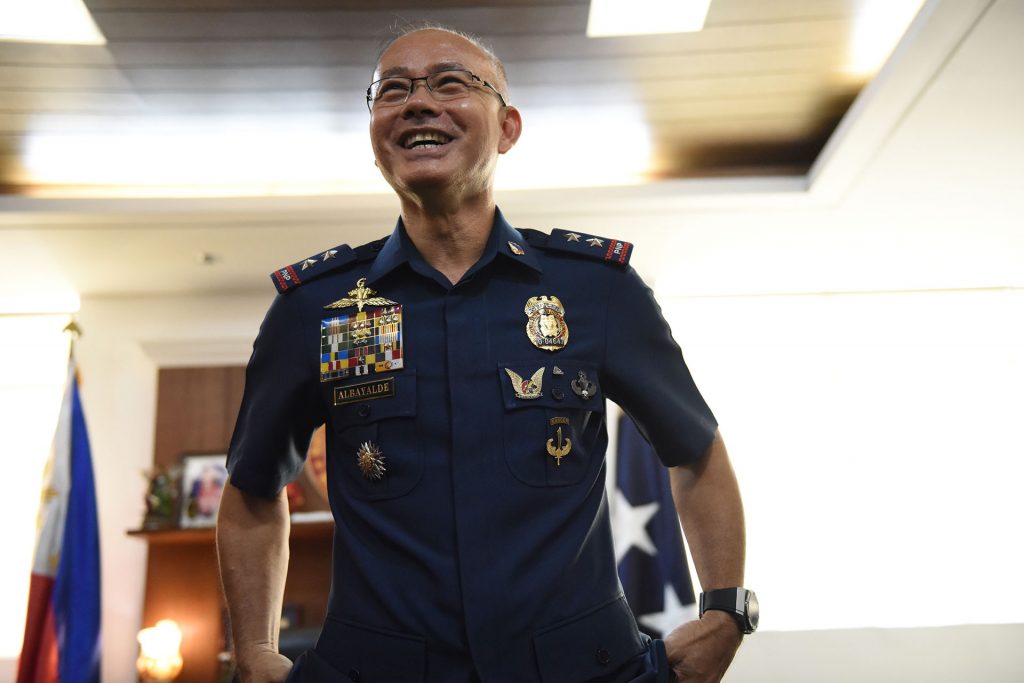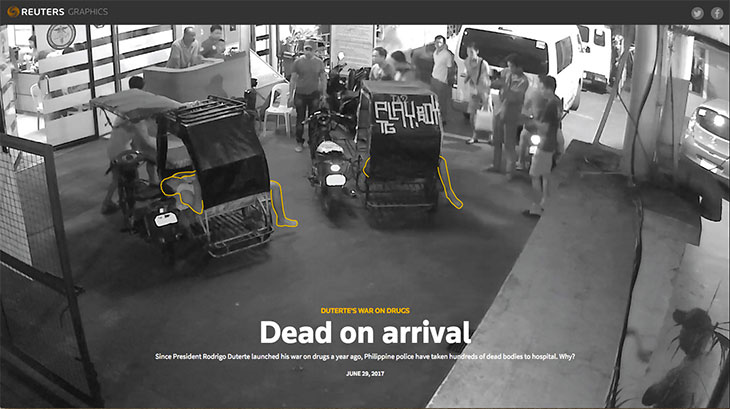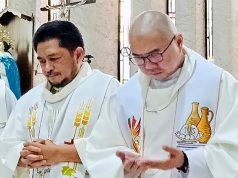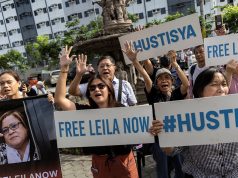MANILA, Philippines — The residents of Old Balara hid in their homes when gunfire erupted in their district last September. They didn’t see the police operation that killed seven drug suspects that night.
But they witnessed the gory aftermath and it haunts them still.
That night, Herlina Alim said she watched police haul away the men’s bodies, leaving trails of blood. “They were dragged down the alley like pigs,” she said. Her neighbor Lenlen Magano said she saw three bodies, face down and motionless, piled at the end of the alley while police stood calmly by.
It was at least an hour, according to residents, before the victims were thrown into a truck and taken to hospital in what a police report said was a bid to save their lives. Old Balara’s chairman told Reuters he was perplexed. They were already dead, Allan Franza said, so why take them to hospital?
An analysis of crime data from two of Metro Manila’s five police districts and interviews with doctors, law enforcement officials and victims’ families point to one answer: Police were sending corpses to hospitals to destroy evidence at crime scenes and hide the fact that they were executing drug suspects.
Thousands of people have been killed since President Rodrigo Duterte took office on June 30 last year and declared war on what he called “the drug menace.” Among them were the seven victims from Old Balara who were declared dead on arrival at hospital.
A Reuters analysis of police reports covering the first eight months of the drug war reveals hundreds of cases like those in Old Balara. In Quezon City Police District and neighboring Manila Police District, 301 victims were taken to hospital after police drug operations. Only two survived. The rest were dead on arrival.
The data also shows a sharp increase in the number of drug suspects declared dead on arrival in these two districts each month. There were 10 cases at the start of the drug war in July 2016, representing 13 percent of police drug shooting deaths. By January 2017, the tally had risen to 51 cases or 85 percent. The totals grew along with international and domestic condemnation of Duterte’s campaign.
This increase was no coincidence, said a police commander in Manila, who spoke to Reuters on condition of anonymity. In late 2016, he said, police began sending victims to hospitals to avoid crime scene investigations and media attention that might show they were executing drug suspects. A Reuters investigation last year found that when police opened fire in drug operations, they killed 97 percent of people they shot.
The Manila commander said police depended on emergency room doctors being too focused on the patients to care about why they were shot. The doctors “aren’t asking any questions. They only record it: DOA,” he said.
But five doctors told Reuters they were troubled by the rising number of police-related DOAs. Four said many drug suspects brought to hospital had been shot in the head and heart, sometimes at close range — precise and unsurvivable wounds that undermined police claims that suspects were injured during chaotic exchanges of gunfire.
Oscar Albayalde, Metro Manila’s police chief, said he had never heard of officers taking dead suspects to hospital to cover up crime scenes. “We will have that investigated,” he told Reuters. If that investigation showed police were intentionally moving these dead bodies and bringing them to the hospitals just to alter the evidence, then I think we have to make them explain.”

Duterte’s office declined to expand on Albayalde’s response to Reuters’ questions.
According to police reports about the incidents, suspects shot during operations were “immediately rushed” to hospital. “The most important (thing) is the life of the person,” said Randy Llanderal, a precinct commander in Quezon City. The police reports reviewed by Reuters showed Llanderal had led or joined operations in which 13 drug suspects ended up dead on arrival.
Llanderal said all suspects were shot in self-defense during legitimate operations.
The Manila police commander, a retired senior officer and some doctors believe there is a cover up. Hospitalizing drug suspects who have been shot allows police to project a more caring image, said the Manila commander. The retired officer agreed. “It is basically a ploy to make the public believe that the police are mindful of the safety and survival of suspects,” he said, speaking on condition of anonymity.
The Manila commander said his officers were instructed to shoot at “sensitive areas.” Suspects who survived were shot again to finish them off or smothered with their own clothing, he said.
A Reuters examination of the Old Balara incident and similar operations also suggests that the purpose of hospital runs was to destroy evidence rather than save lives. Police manhandled gunshot victims and showed no urgency in getting them medical treatment, said three sets of family members and other witnesses.
Removing bodies makes it harder to work out what really happened. “You obliterate the crime scene — the evidence,” said Rizaldy Rivera, an agent at the Philippines’ National Bureau of Investigation who has investigated allegations of police brutality. Police forensic investigators at the scene, said Rivera, must carry out their work on what is effectively a “tampered crime scene.”
Scene of Crime Operatives, or SOCO units as police forensic teams are called, process crime scenes and conduct autopsies. Aurelio Trampe, the police general who oversees SOCO, said police officers haven’t been removing bodies to alter crime scenes. He said they have the discretion to disregard crime-scene investigative procedures “just as long as they could save lives.”
SOCO can still collect evidence from bodies once they reach the hospital, but doesn’t always do so. Instead, said SOCO forensic chief Reynaldo Calaoa, that task falls to a police investigator assigned to the case. That investigator often hails from the same station as the colleagues who killed the suspect.
Such practices can leave the system open to abuse, said Raquel Del Rosario Fortun, an independent forensic scientist and chair of the University of the Philippines Manila pathology department.

“They do the shooting, they do the killing — and they investigate themselves,” she said. “Impunity, that’s what’s happening.”
Old Balara is part of Quezon City, the largest of the 17 cities and municipalities that make up Metro Manila, and the most populous city in the Philippines.
Old Balara district head Franza said police insisted his staff of volunteer security guards bring drug-war casualties from operations to the hospital — even when it was clear they were dead. Because he has assisted the police by transporting casualties, the victims’ families have accused him and his staff of complicity in the killings, he said.
In March, Franza decided he had had enough. Keep responding to police calls, he told his staff, but don’t take a body to hospital without the go-ahead from SOCO crime scene investigators. “I decided not to take action which I think is not proper,” said Franza.
The seven victims from Old Balara arrived at East Avenue Medical Center stacked in a flatbed truck and another vehicle, said Jerome Paez, an attending physician at the emergency room that night. Most had been shot in the head and many also had multiple gunshots in their chests, he said. None were breathing or had a pulse.
“All of them were cold to the touch,” said Paez, who has dealt with 21 drug suspects pronounced dead on arrival.
The victims had been refused admission earlier at Quezon City General Hospital’s emergency room, a 15-minute drive away, because they were already dead, said district chief Franza. The hospital told Reuters it had no record of receiving patients from Old Balara that night.
The Old Balara bodies were already in the morgue of East Avenue Medical Center by the time the mother of victim Elmer Gayoso arrived. She asked Reuters to withhold her name, saying she feared retribution from the police.

Gayoso had been shot through the head and the heart, she said, and the headshot had destroyed his face. She said her husband identified him by scouring his corpse for familiar childhood scars. The wounds were so grave that she didn’t believe that the police took Gayoso to the hospital to save his life.
“That was their pretense,” she said, weeping.
The killings also troubled Paez, the ER doctor. “We documented everything, just in case in the future it is needed for investigation,” he said.
Even if doctors at East Avenue Medical Center suspect a new arrival is dead, hospital protocol requires them to try to resuscitate the patient, said Paez. This is costly and wastes time at a big public hospital teeming with patients. In a recent visit by Reuters, old people wearing oxygen masks lay unmoving on gurneys. New patients arrived every few minutes.
Asked about the number of drug suspects arriving dead at hospital, the acting director of the East Avenue Medical Center, Victoria Abesamis, said: “I cannot categorically say that the police are bringing these dead bodies because they want to cover up. I think I will give them the benefit of the doubt.”
TRAINED SHOOTER
Lawrence Bello and three other doctors at East Avenue Medical Center interviewed by Reuters also expressed unease about handling dead-on-arrival cases from police operations.
Bello said the police would sometimes deliver bodies that were already displaying rigor mortis, which sets in several hours after death. East Avenue would get two or three such bodies per month, he said.
Bello has dealt with 20 cases where suspects were dead on arrival following a police operation, according to Quezon City Police District data. One of them, Bello said, had a single gunshot wound. The bullet had entered below the chin and exited through the top of the head. Bello said he found the injury “quite questionable.”
Such an injury is usually associated with victims of suicide or execution, said Homer Venters of Physicians for Human Rights, a group based in New York that investigates mass atrocities. “It is very hard for that to happen when a person isn’t fully compliant,” he said. Venters didn’t examine the body that Bello referred to.
Patel Mayuga, another ER doctor at East Avenue Medical Center, has pronounced 10 victims of police shootings dead on arrival, according to Quezon City Police District data. Suspects who are dead on arrival usually have “clean shots” in the forehead or chest, suggesting the killings were intentional, said Mayuga. “If they are shot in the chest or head, there was time for the attacker to prepare,” he said.
Many other drug suspects brought to hospitals in Quezon City by police were also shot in the head and heart, often from less than a meter away, four doctors told Reuters.

One January evening, police delivered five bodies in a small jeepney to the state-run Novaliches District Hospital in Quezon City. The floor of the jeepney bus was puddled with the victims’ blood and excrement, recalled Lawrence Laguno, the ER doctor on duty. According to police, the victims had all pulled guns and opened fire on undercover officers during an anti-drug operation. They missed, and the police returned fire.
“All suspects were seriously injured,” said the police report. “Thereafter, wounded suspects were rushed to Novaliches District Hospital for medical treatment but pronounced dead on arrival by attending physician, Dr. Lawrence Laguno.”
Laguno told Reuters that all five men had been shot in the head and chest, with almost the same entry and exit wounds — injuries that looked to him both deliberate and impossible to survive. “It’s unusual to have the same five patients with almost the same injuries,” said the doctor. “It was a trained shooter. They knew what they were doing.”
Venters of Physicians for Human Rights said it is “incredibly rare” to sustain a tight grouping of gunshot wounds in a shootout. Venters, a medical doctor, has overseen research and investigations into extrajudicial killings. When bullets enter a body from the same direction and plane, it shows the target wasn’t moving, he said. “Either they were surprised and shot, or they were subdued and shot.”
CLICK THE IMAGE TO VIEW REUTERS’ INTERACTIVE PRESENTATION:
 Willie Saludares, acting chairman of the emergency room at East Avenue Medical Center, said doctors didn’t follow up on questionable cases, since how patients were killed wasn’t their concern. “I’m sorry to sound too cold, but that’s the way it is,” he said. “I am only concerned about the health of the patient. I’m not doing investigative work.”
Willie Saludares, acting chairman of the emergency room at East Avenue Medical Center, said doctors didn’t follow up on questionable cases, since how patients were killed wasn’t their concern. “I’m sorry to sound too cold, but that’s the way it is,” he said. “I am only concerned about the health of the patient. I’m not doing investigative work.”
Nor, it seemed, were others. Saludares said that state agencies that investigate police killings, such as the Commission on Human Rights or the National Bureau of Investigation, didn’t come to interview him. Saludares also said he was uncomfortable speaking freely and feared losing his job.
Chito Gascon, chairman of the Commission on Human Rights, said that if specific cases were brought to the agency’s attention, its investigators should pursue them and secure testimony from doctors. But the Commission was stretched, he added. “The CHR, given its current capacity constraints, is only able to investigate and document a fraction of all the deaths that have been reported by the media,” he said.
The National Bureau of Investigation didn’t comment.
‘THEY WEREN’T BREATHING’
Police say they don’t shoot to kill and that saving lives is paramount. But 17 witnesses interviewed by Reuters say their behavior at crime scenes suggests the opposite.
In September, in a district called Nagkaisang Nayon, precinct commander Llanderal led an operation that added six dead-on-arrival cases to the Quezon City body count. According to a police report, the suspects – five men and a woman – opened fire on undercover officers posing as drug buyers. They missed, and the officers returned fire.
“When the smoke cleared,” said the report, “all suspects sustained gunshot wounds on their body. Immediately thereafter, all suspects were rushed to Novaliches District Hospital for medical treatment but (were) pronounced dead on arrival.” None of the officers were injured.
Llanderal acknowledged that removing the bodies disturbed the crime scene, but insisted the suspects were alive. “They were still moving. All of them!” he said.

Bereaved relatives and other witnesses told Reuters the bodies were taken to hospital an hour or more after the shooting, and that none of the victims showed signs of life. “They weren’t moving. They weren’t breathing,” said Feliciano Dela Cruz, the local district chief.
“It’s not possible they were alive,” said Jocelyn Ceron, 47, whose husband, Ronaldo, was among the dead. “We saw them thrown in the back of a truck.”
Ceron said Ronaldo’s body had six bullet wounds: three in the chest or torso, one in the leg, and one in each hand. Relatives said the other bodies each bore at least six gunshot wounds. Ceron showed Reuters photos of the crime scene.
Llanderal confirmed that the photos were taken by police investigators and showed the immediate aftermath of his operation. One photo shows a woman lying face down in a blood-smeared alleyway. Others show a tiny room in which five men lie slumped in pools of blood or on the floor; two guns are clearly visible.
Reuters shared the crime scene photos with Fortun, the independent forensic scientist. “Based on the pictures, they are apparently very dead,” Fortun said of the six victims.
For so many bodies to be crammed into a tiny room “doesn’t seem consistent” with police claims that the suspects were shot while fleeing during a gun battle, she added.
Relatives of Ronaldo Ceron believe the police executed him and others in cold blood. A neighbor called Maricol Amacna said she heard one of the men begging, “Don’t kill me, sir!” The Commission on Human Rights says it is investigating the killings.
The police have dismissed allegations of wrongdoing as “useless and baseless,” and have issued commendations to Llanderal and his men for “the extraordinary courage you have displayed in the successful operation … which resulted in the neutralization” of the suspects.
Llanderal denied executing drug suspects. “In police operations, we don’t know where the bullets may hit,” he said. “Some suspects retaliate, fight us. We are only defending ourselves.” (Additional reporting by Manuel Mogato and Chin Samson)
CLICK TO WATCH THE REUTERS TV REPORT:










